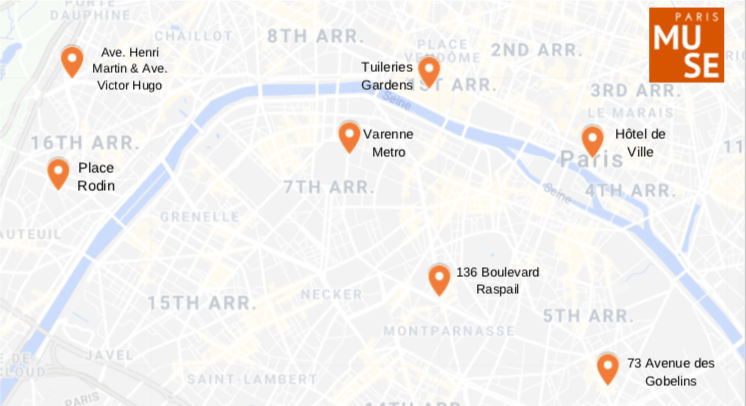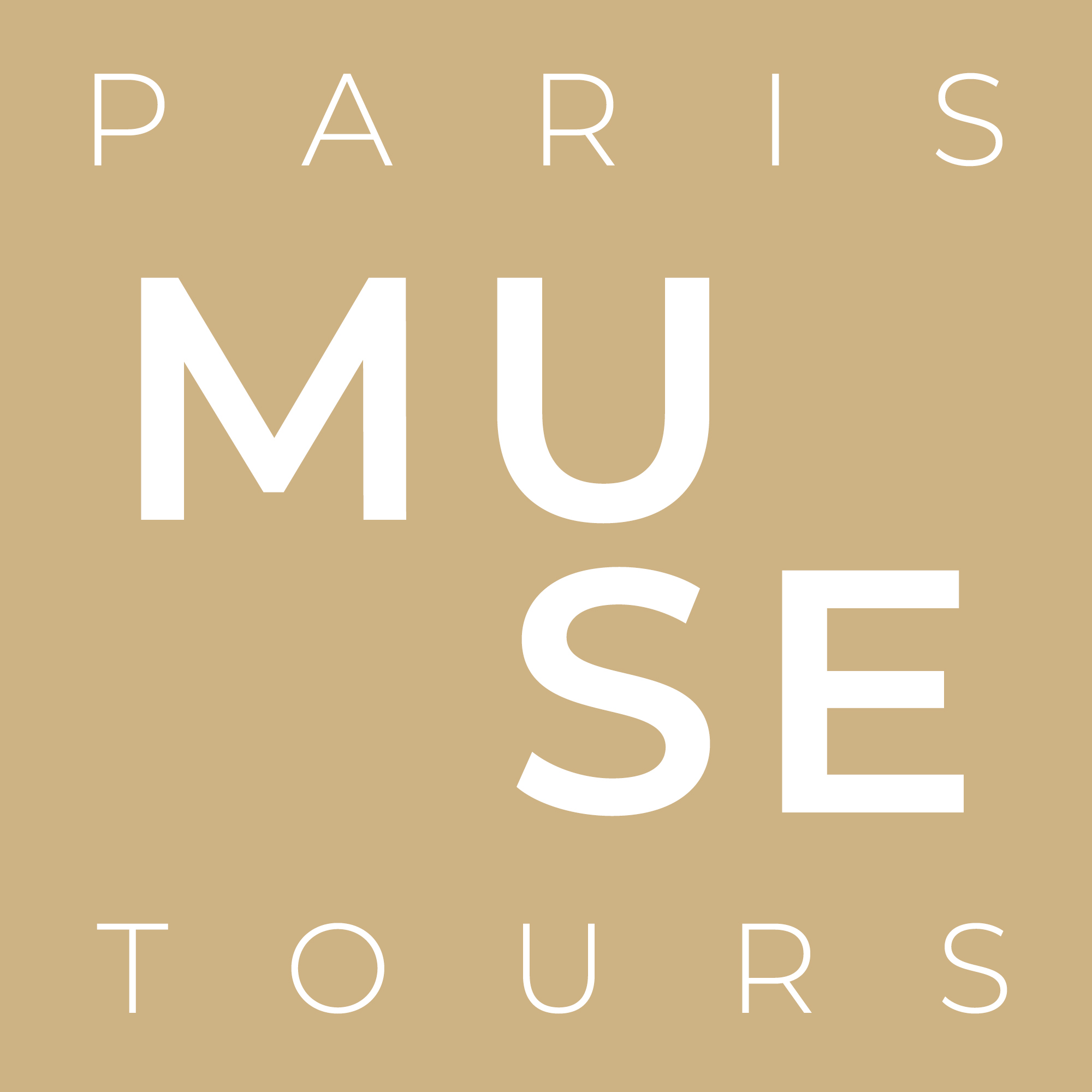You can see examples of his work in almost every corner of the city.
Auguste Rodin was a true “Left Bank” Parisian. His Paris stretches from the Faubourg Saint-Marcel where he was born to his final home at the Hôtel Biron, now the Musée Rodin. Most people head to the museum to see Rodin’s work, but in fact, his sculpture can also be seen all over the city.
Rodin is a paradoxical case. Although he raised much critical hue and cry throughout his career, he was relished by French institutions and snowed under with public commissions. Yet he entered the art world by the back door. He failed the entrance exams to the Ecole des Beaux-Arts, the main art school, three times. His sculptures were consistently rejected from the Salon. He worked for another sculptor to make a living. And when finally he became known, at age 35, it was with a scandal.
Our “Rodin: a Life in Sculpture” tour of the Musée Rodin explores all of these fascinating details and more. But outside the museum’s walls, you can finds works by the ‘French Michelangelo’ if you know where to look.
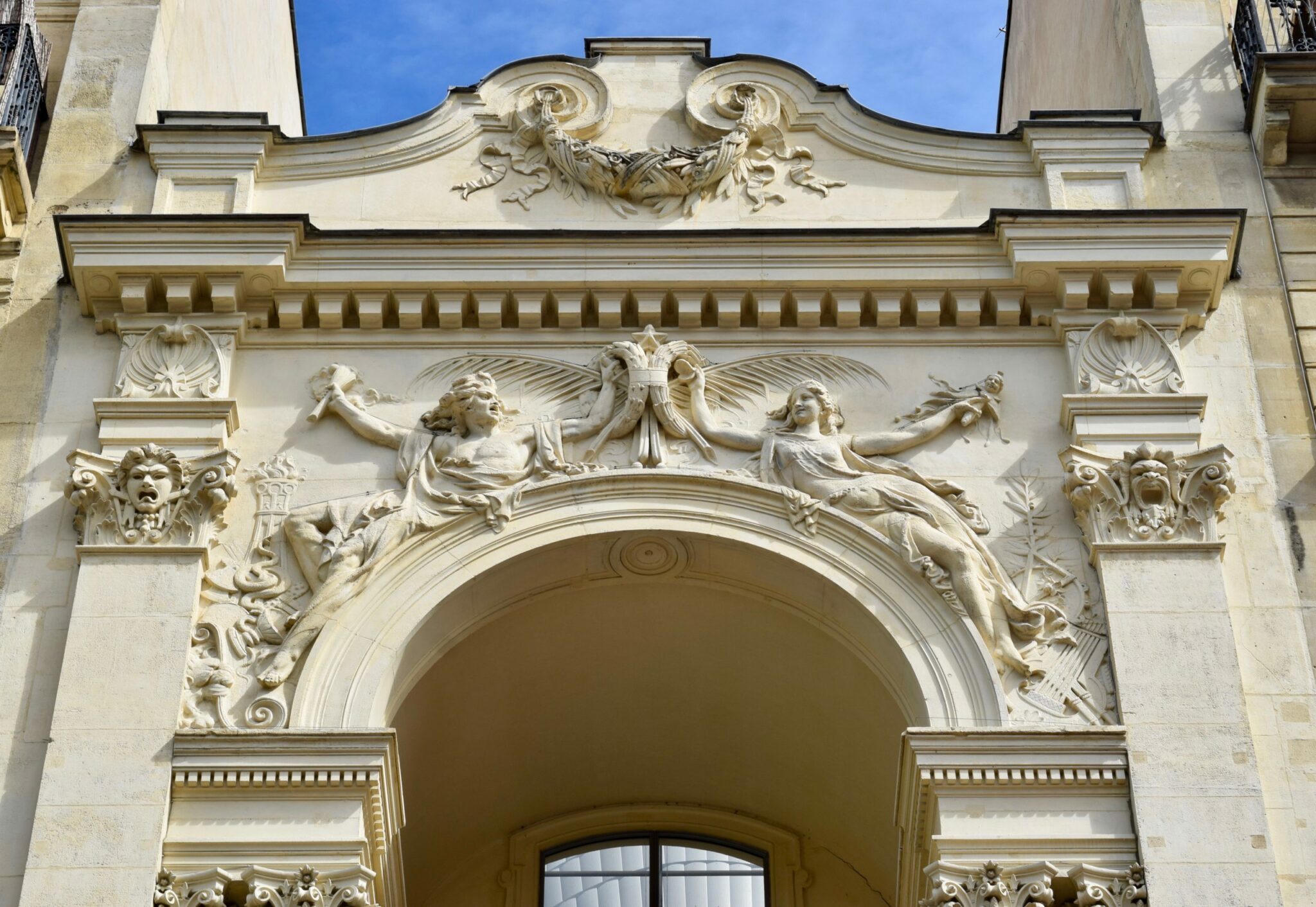
73 avenue des Gobelins (13th arr.), Drama and Comedy
One of Rodin’s earliest works can be found minutes away from the school he attended as an apprentice sculptor. At 73 Avenue des Gobelins stands the former Théâtre des Gobelins, built in two elongated high-reliefs decorating the façade.
On the left, an allegory of Drama—a man holding a torch and a sword. On the right, a female figure with a jester’s staff and a pair of Greek castanets symbolizes Comedy.
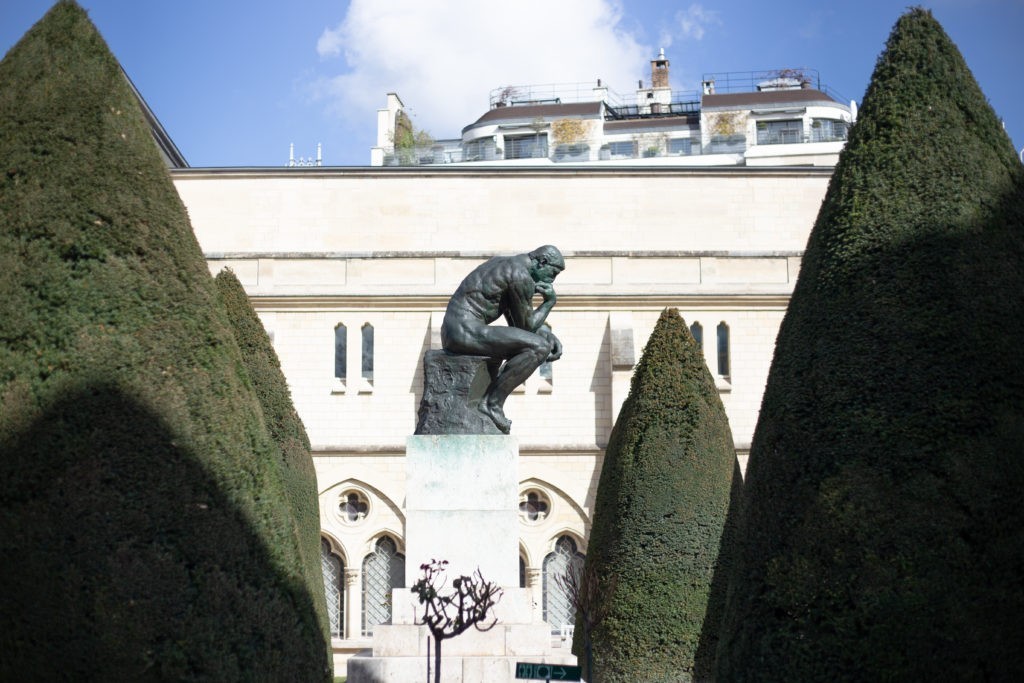
Hôtel de Ville (4th arr.), Jean le Rond d’Alembert
Paris lost its medieval city hall to the Paris Commune in 1871. A few years later, a new building was underway. Rodin was working for the acclaimed sculptor Albert-Ernest Carrier-Belleuse. He applied to be on the decoration team for the new city hall.
He was granted a commission for a statue of Jean le Rond d’Alembert—Paris-born mathematician and philosopher.
Rodin completed the statue in 1882. It is visible on the main (western) façade of the Hôtel de Ville—1st story, the last figure on the left.
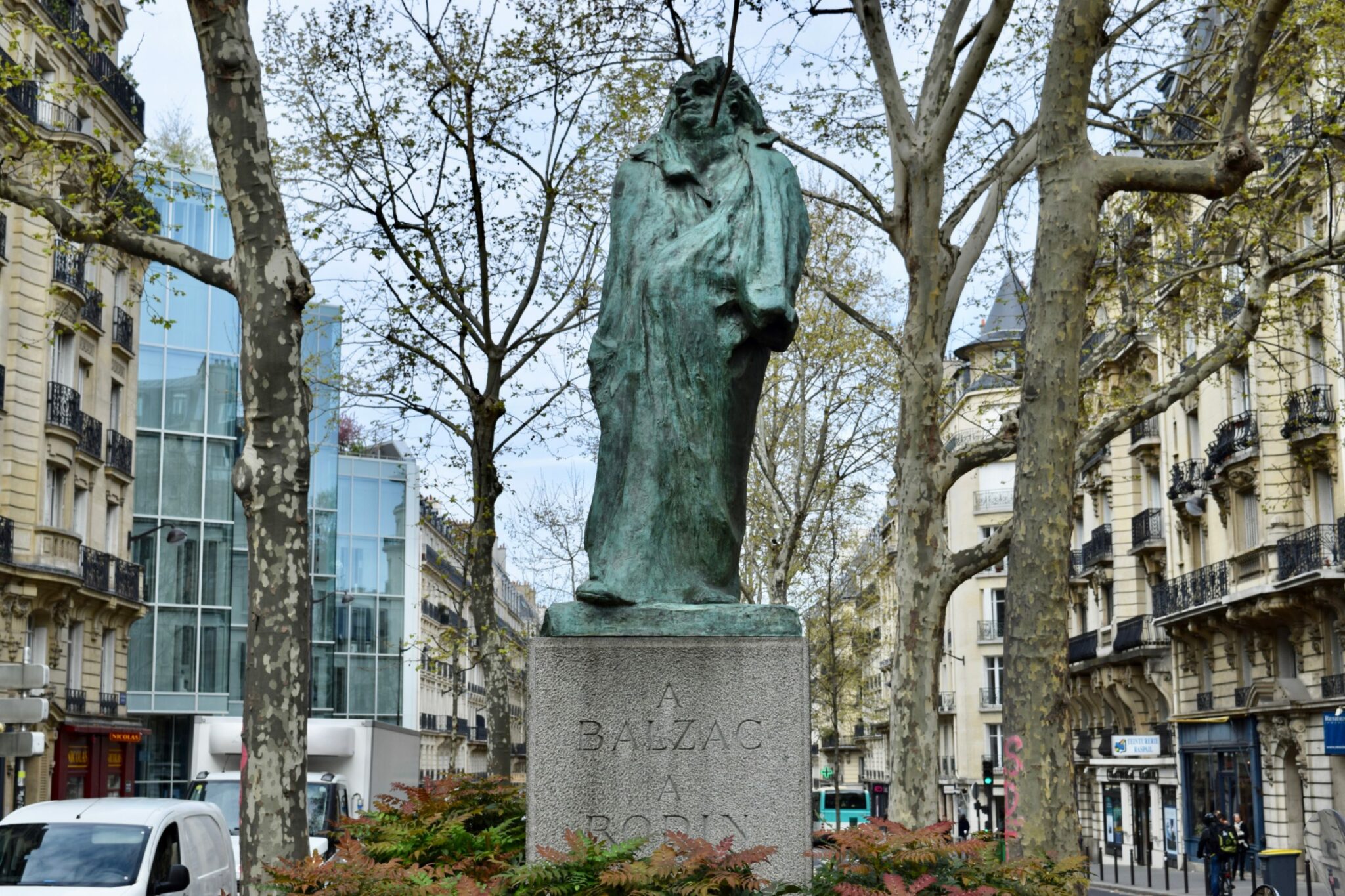
136 Boulevard Raspail (6th arr.), Honoré de Balzac
Rodin considered his monument to the French novelist Honoré de Balzac to be his most important accomplishment.
Designed to commemorate Balzac’s 45 years of death, it was commissioned in 1892 by a French Literary Society. It took Rodin 6 years of work.
When first exhibited, the public mocked the statue, calling it, “Menhir,” “Penguin,” “Snowman,” “Coal bag,” and other nicknames.
Rodin tried and rejected several versions of Balzac: athletic nudes and paunchy gnomes, different hairstyles, with or without hands. Eventually, he eliminated almost all details. He only kept Balzac’s notorious stoutness and his famous housecoat.
When Rodin was finally forced to reveal his cast, his patrons were infuriated and rejected the work. Rodin was explicitly forbidden to cast it in bronze.
He gave up and put Balzac in his garden in Meudon, where it remained until his death, in 1917.
The statue was finally cast in bronze in 1931—nearly 25 years later.
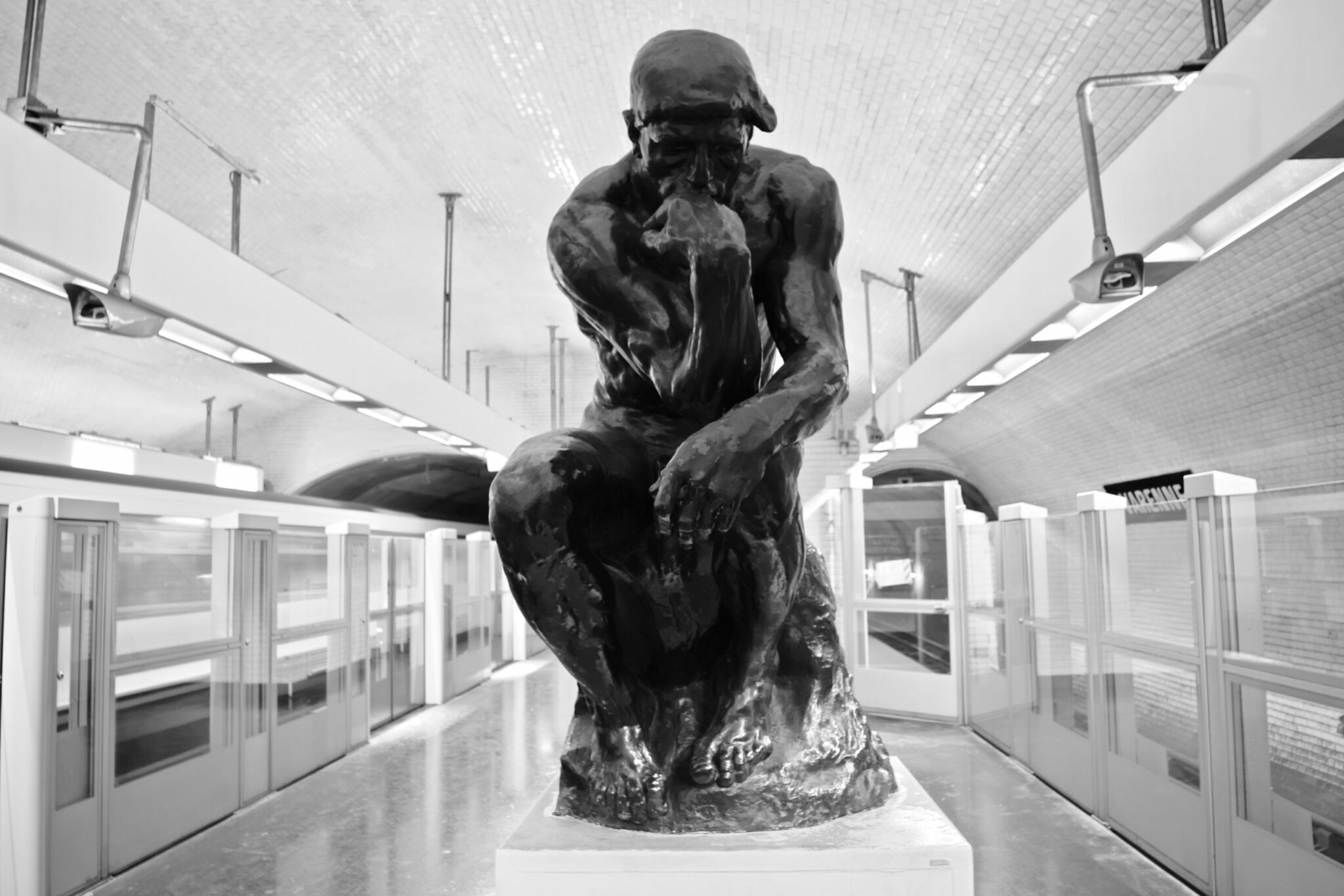
Varenne metro station (7th arr.), The Thinker
Abandon hope, all ye who enter… the Varenne metro station on Line 13.
Like many other Rodin’s works, The Thinker is an enlarged figure from his monumental œuvre—The Gates of Hell. This large door was commissioned to Rodin in 1880 for a temporary Musée des Arts Décoratifs. Rodin worked on it for 20 years and never completed it. However, the figures he imagined for it—over 200 in total—served him throughout his career as a stock of ideas.
Much like Dante himself, Rodin had an exuberant imagination and a taste for naturalism. His Gates are alive with dozens of twisted and tortured bodies. It is a testament to Dante’s dramatic vision of the world: the man’s revolt against the higher forces.
Rodin soon began to extract figures from the unfinished door and to exhibit them separately. The Thinker was among the first ones. It is Dante himself—only not a portrait. The figure is nude, but for Dante’s recognizable pointed hat. It is an allegory of the Man’s Fate: the solitude of thought, the pain of creation, the drama of self-awareness. “He is no longer dreamer, he is creator,” Rodin later explained.
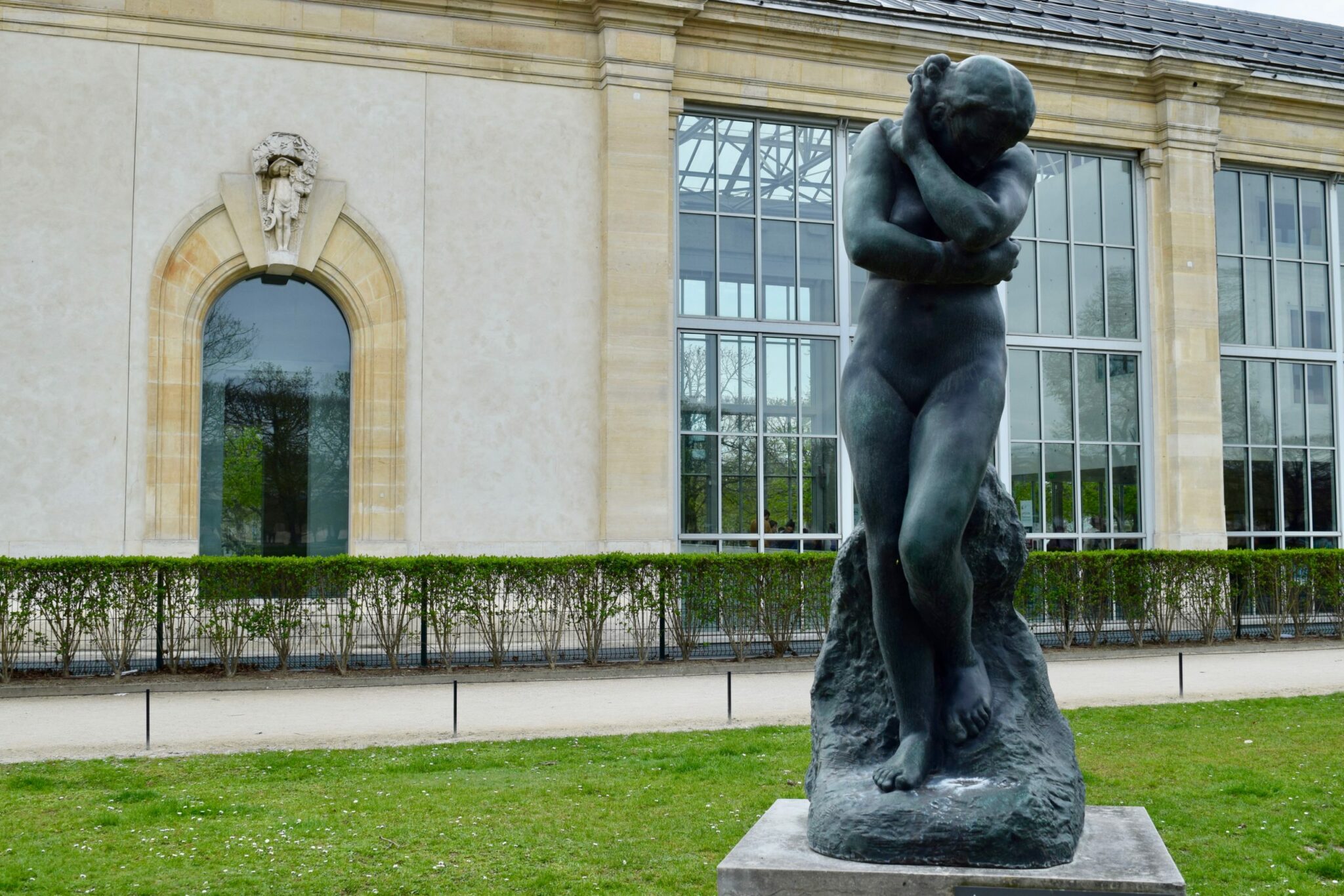
Tuileries Garden (1st arr.), The Kiss, Eve, Shadow, Meditation
Four of Rodin’s famous works, cast in bronze, are placed in the Tuileries Gardens, next to the Orangerie Museum: Eve, Shadow, Meditation (facing Rue de Rivoli) and the ultimate romantic image—The Kiss (facing Place de la Concorde).
The Kiss represented Dante’s Paolo and Francesca—the adulterous lovers damned to be eternally separated in Hell. Rodin created the statue the year when he met Camille Claudel. He depicted the couple at the moment when they abandon themselves to love, seduced by the story of Lancelot and Guinevere. A moment later, Francesca’s husband, Paolo’s brother, would surprise them and kill them both.
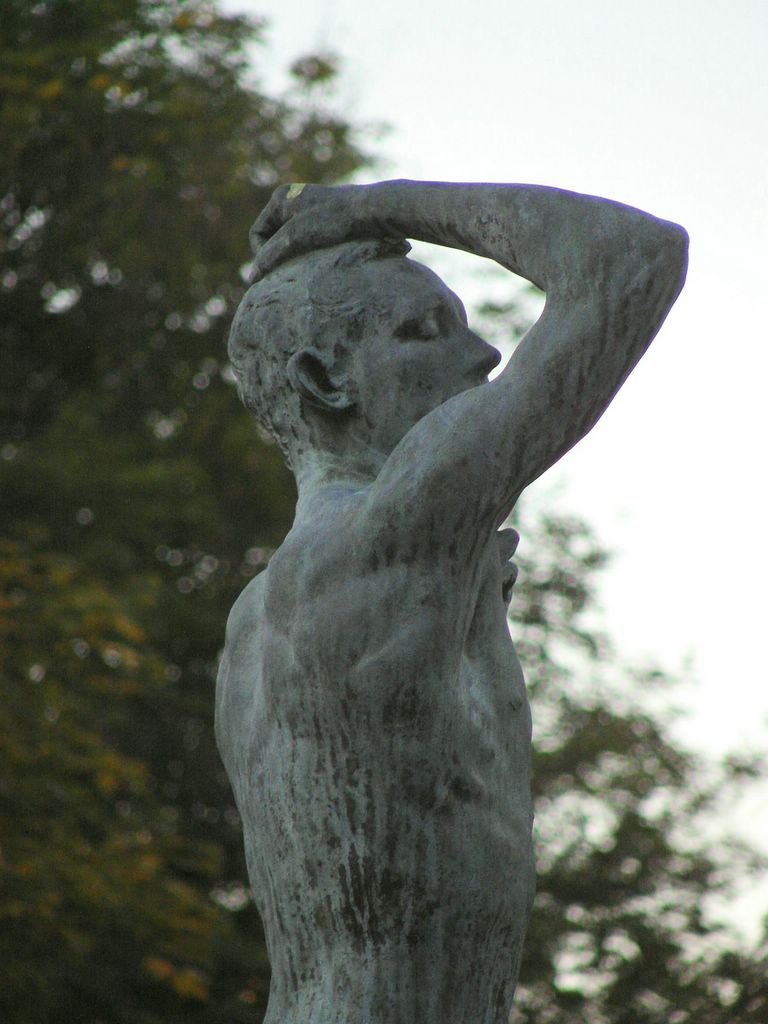
Bronze. Photo: Paris Daily Photo
Place Rodin (16th arr.), The Age of Bronze
This statue was Rodin’s first solo work, at the age of 35. It was the piece that brought him notoriety. Because the figure was human-sized and extremely naturalistic, Rodin was accused of cheating, of making a life-cast directly from the body of his model. Mortified, Rodin produced testimonies and photographs to prove his integrity. It didn’t help. The scandalous work sparkled interest for Rodin among the sensation-greedy Parisian public.
Rodin named this piece the “The Age of Bronze.” As a nod to the Greek poet Hesiod who had described Five Ages of Man, of which the Third, the “Age of Bronze” referred to a race of strong warriors.
Another cast of this statue can be found in the courtyard of the Lycée Rodin (19 rue Corvisart, 13th arr.).
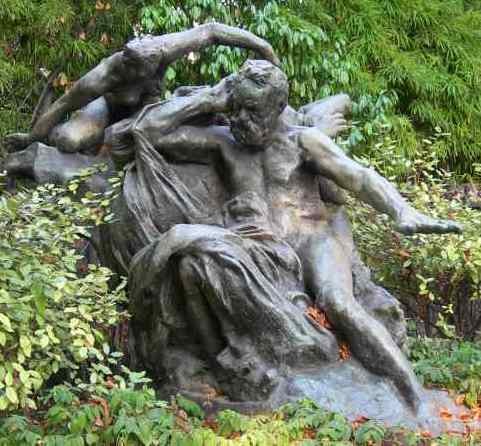
Bronze. Photo: Nella Buscot
Intersection of Avenues Victor-Hugo and Henri-Martin (16th arr.), Victor Hugo and the Muses
Victor Hugo, the preeminent French novelist and poet, died in 1885. Hugo was venerated as a national hero, a living symbol of his century. After his death, the French government inaugurated a program of tomb sculptures for the Pantheon. Hugo’s monument was given to Rodin—the only master deemed deserving to take on the challenge.
Hugo is seated on a rock and extending the arm as if to tame the sea. Reminiscent of the twenty years in exile Hugo spent on the English island of Guernsey, where he created the majority of his most famous works.
The government thought the monument was not fit for the Pantheon and instead placed it in the gardens of Palais-Royal, near the Louvre.
